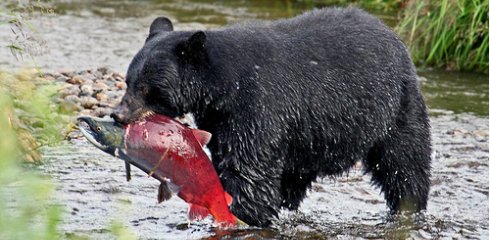Fugitive Fish

A new study has found that farmed Atlantic salmon are escaping their net pens and interbreeding with their wild cousins. This is a problem because it is suspected that interbreeding results in lower reproductive success and individual fitness. Escapees compete with native populations for food. In addition, farmed fish have higher rates of illness and parasites than wild salmon do, making it more likely that a fugitive could infect the wild population. The study of Norwegian waters found that 50% of wild populations had some farmed fish among them.
However, there is a general dearth of information regarding multiple generations down the line. The Atlantic salmon raised in Norway is only about 40 years removed from the wild, and are not yet a different species. The genes selected for include growth, filet size, and more efficient utilization of feed. While farmed salmon may mature faster and grow larger than their wild cousins, it is unknown whether these traits would endure after a few generations of interbreeding.
The study didn’t mention the aspect of the story most interesting to a home cook, however: Do the fugitives and their hybrid offspring regain the flavor that makes wild salmon so wonderful (and farmed salmon so disappointing)? Wild salmon feeds on krill, plankton, and algae, none of which are part of farmed salmon’s fodder. That’s what provides the flavor and gorgeous pink color that are so lacking in farmed salmon. A population of fish that combines wild taste with farmed size sounds like a chef’s dream.
Now for some cozy things I liked today:
Long read of the day: Mary Roach writes about Project Headgear, the top secret plan to turn sharks into suicide bombers.
Cooking video of the day: Brigadeiro, Brazilian candy
Room of the day: I like everything about this article on a home built in the 1640s


